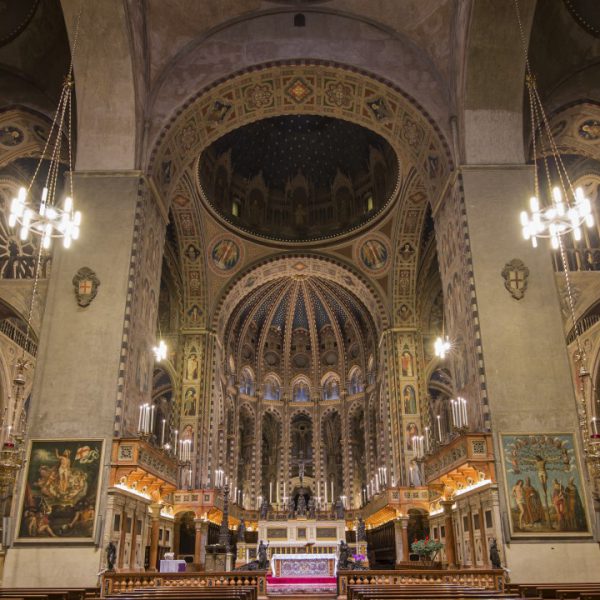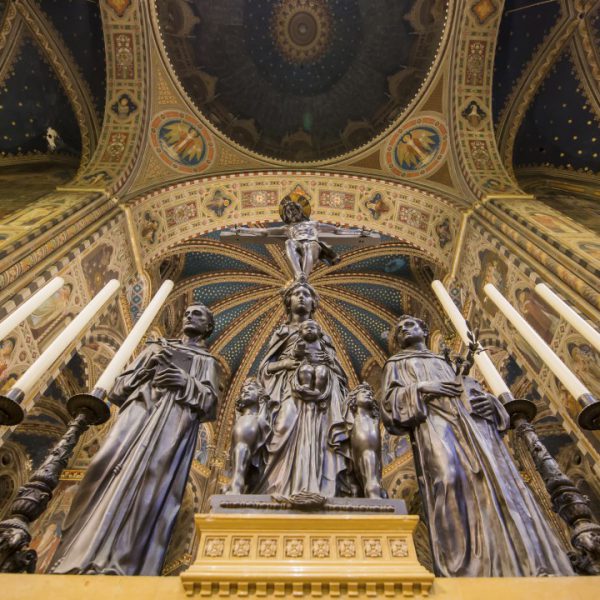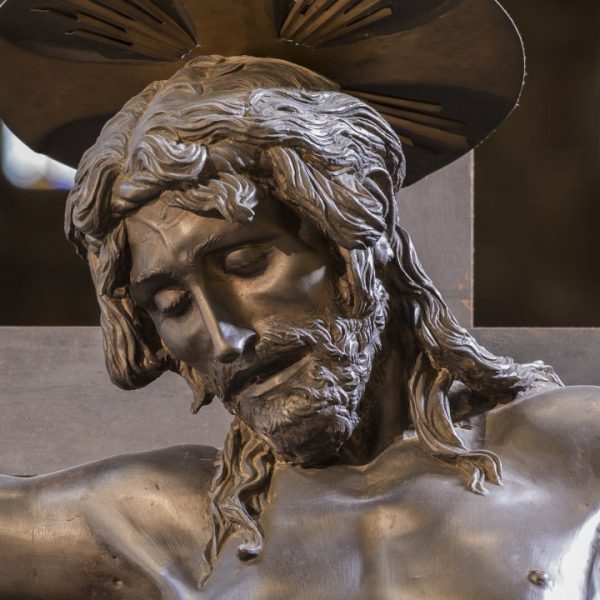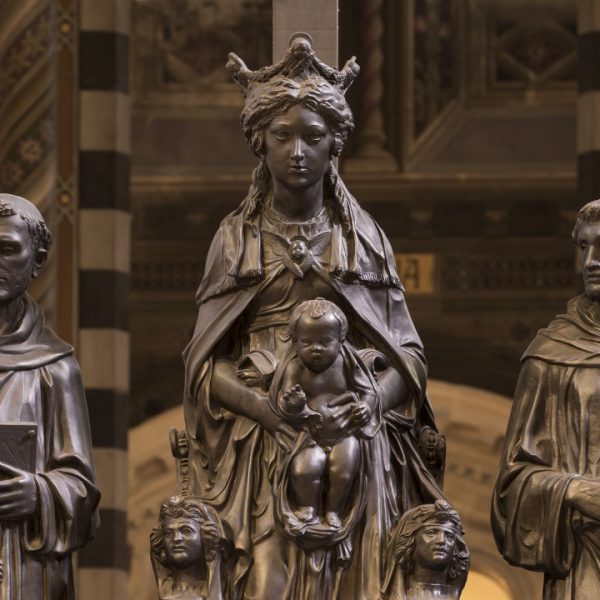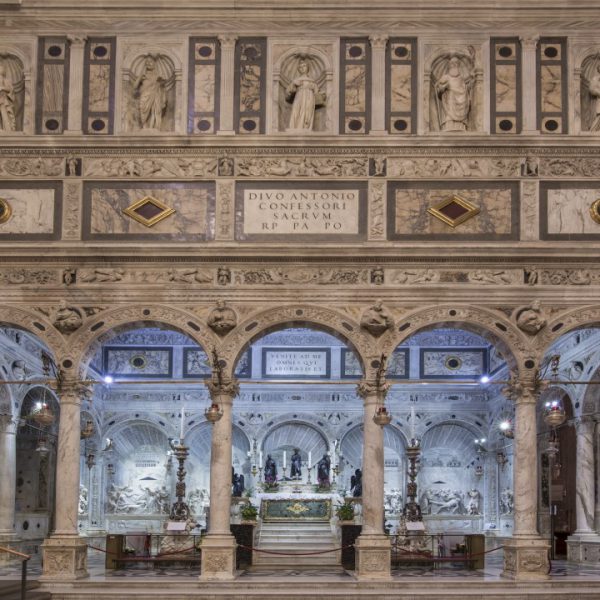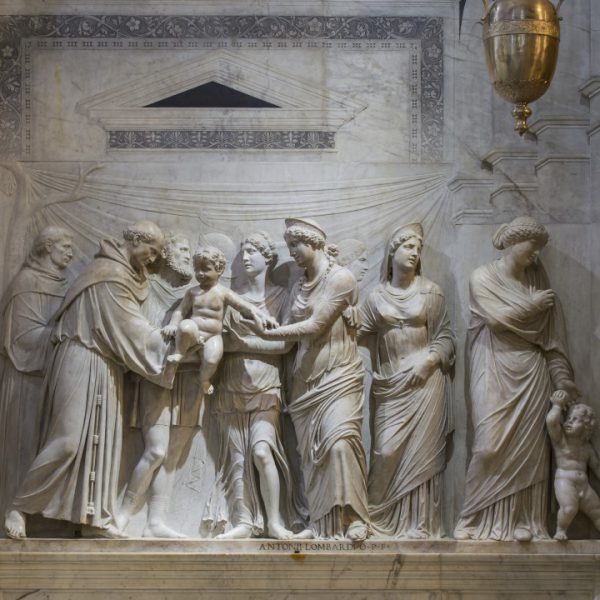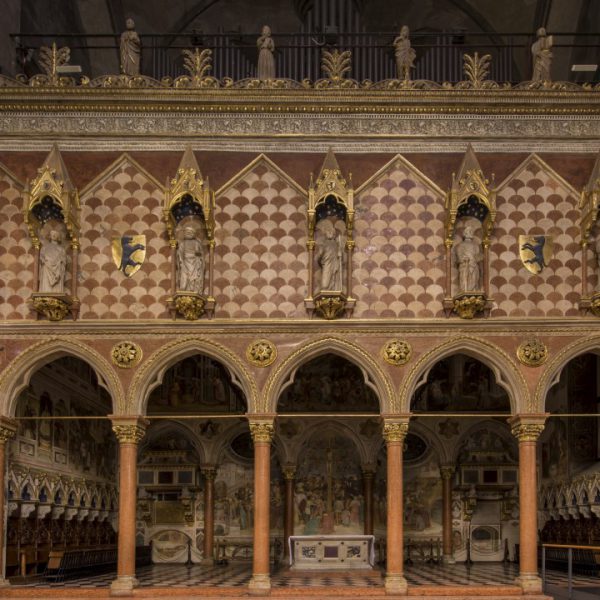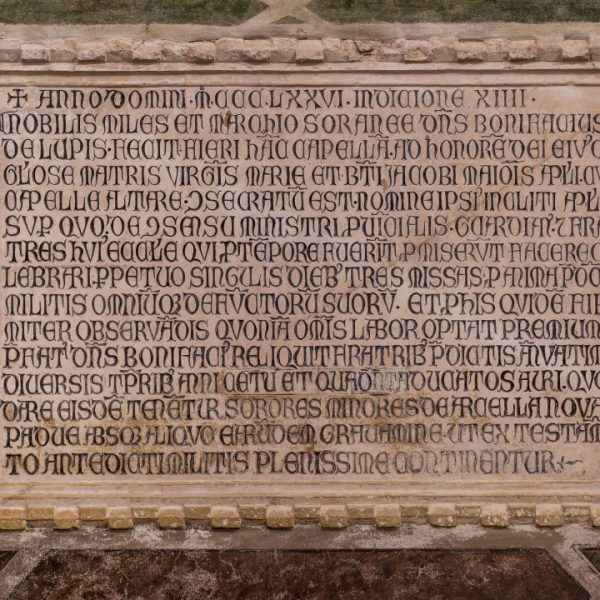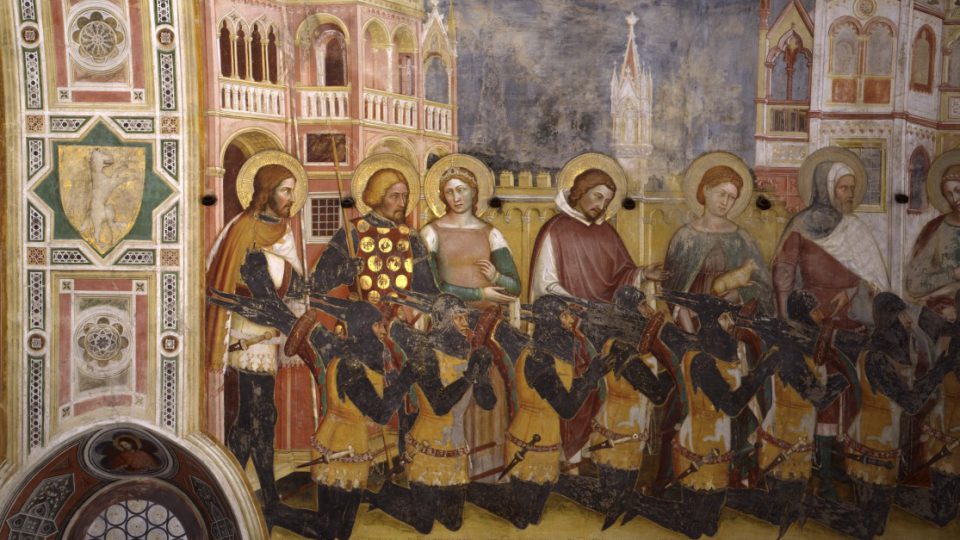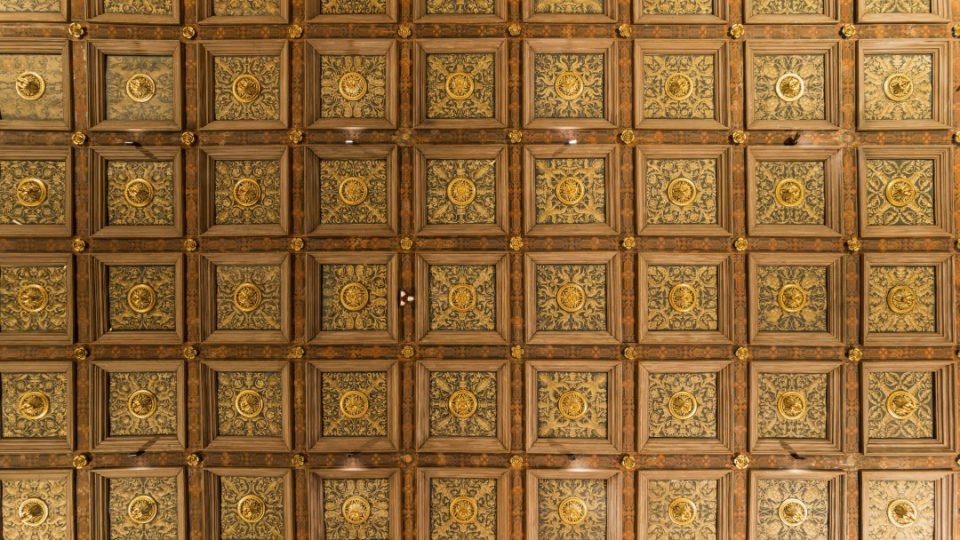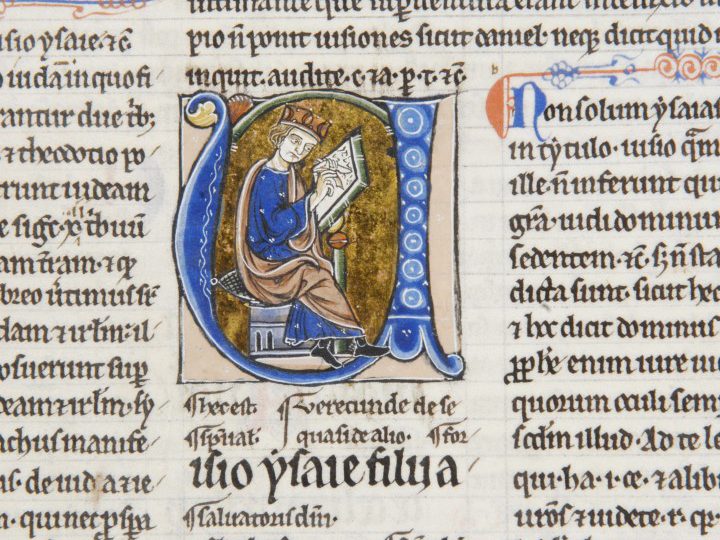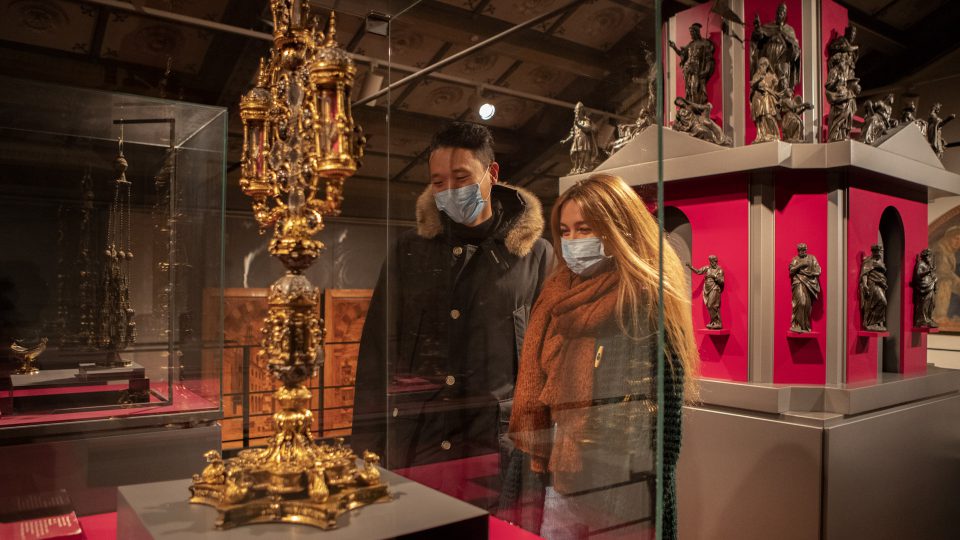A place of excellence
Anthony of Lisbon and Padua died on June 13th, 1231. One year later, with unusual rapidity, he was proclaimed a saint; since then, Padua citizens refer to both Anthony and the basilica erected in his honor as ‘the Saint’. The site where the basilica was built used to house the small Franciscan convent where Antonio lived and the church of Santa Maria Mater Domini (now chapel of the Madonna Mora), where he was first buried. The construction, therefore, incorporated the ancient church and maintained the burial place of the saint right by it. The construction of the monumental basilica proceeded quickly and the construction of the domes was likely planned straight away. An important moment in the development of the project is recorded in documents from 1310, perhaps in relation to the construction of the ambulatory and the chapels behind the apse. The last architectural act of the basilica was the construction of the sanctuary of the relics, between the end of the 17th and the beginning of the 18th century. The sanctuary is a circular appendix of the apse, made by Filippo Parodi. It was built to house the reliquaries the church had been keeping over the centuries – and still maintain today. The architectural, monumental, and artistic history of the basilica and the Antonian complex is a story of excellence. All the best artists from Veneto or traveling through Veneto, have worked in it: Giotto, Donatello, Tiziano, Pietro, Antonio and Tullio Lombardo, Sansovino, Parodi, Tiepolo, and up to Annigoni, in recent years: a true history of Venetian art has materialized in the church and its surroundings, encompassing everything from the Middle Ages to the present day. The 19th century was extremely important for the basilica. During the seventh centenary of the saint’s birth (1895), a work of reorganization and restoration of the interior furnishings of the church was undertaken (wherever possible), under Camillo Boito’s careful supervision. The church’s interiors had deteriorated over the centuries and no longer responded to the liturgical and decorum requirements of the temple. This late 19th – early 20th-century patina made the basilica what it is today. It preserves frescos, oil paintings, stone and wooden sculptures, goldsmithery pieces, textiles, various furnishings – all worthy of consideration and remembrance.



